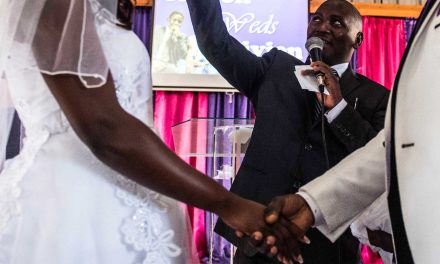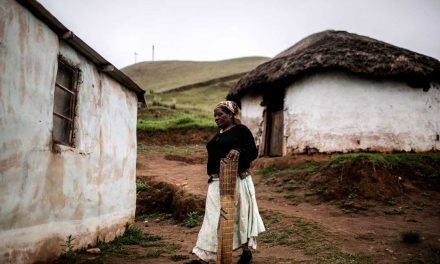US involvement in Somalia’s civil war stimulated its multilateral engagements in the region
The United States is a leading player in shaping peace and security interventions in Africa. In the wake of growing multilateralism after the world wars, the US increased its dominance in the international system, principally influencing interactions of state and non-state actors through the United Nations system. While the US remained covert in its operations in Africa during the world wars, the period after WWII marked a shift in its foreign policy orientation in Africa.
This article reviews US interventions in Africa by analysing its episodic multilateralism and reversals to unilateralism, and the implications for peace and security in the post-Trump era. The first section examines US unilateralism in interventions in Africa in the independence era, while the second explores its shift to multilateralism at the end of the Cold War. The third section highlights US defiance of multilateralism in Africa in the era of the Global War on Terror, while the fourth foresees a return of multilateralism in peace and security interventions anchored within a revitalised African agency.
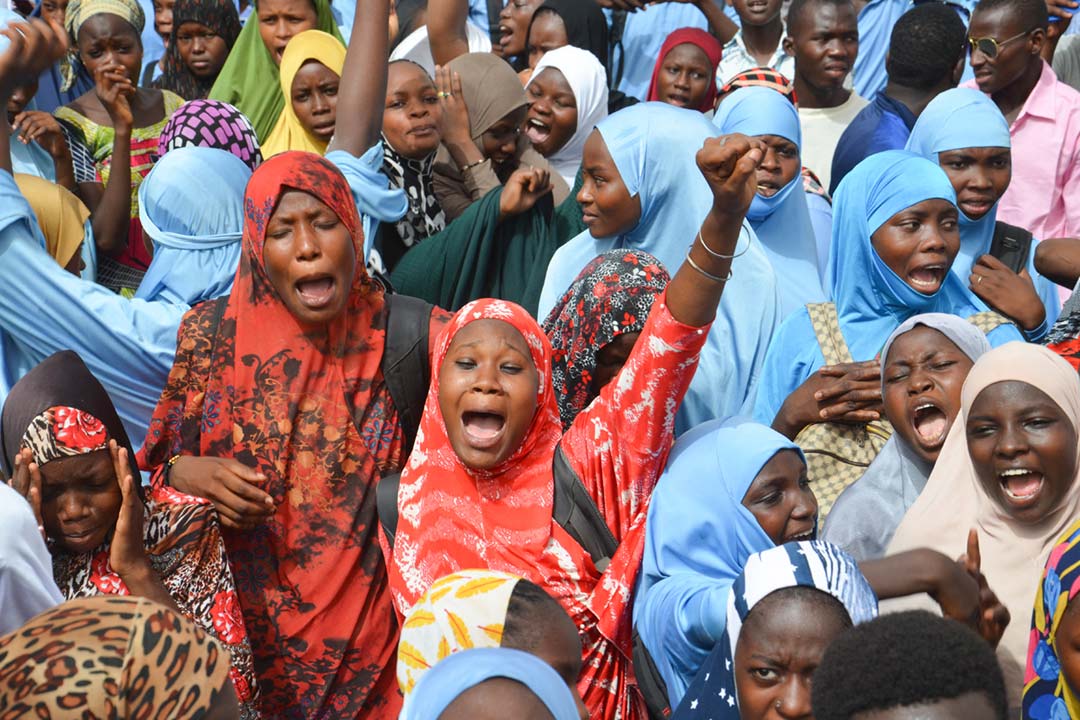
A woman gestures and shouts during a protest on May 25, 2019 in Niamey against the presence in Niger of French and American military bases, accused of inertia against the deadly jihadist attacks. (Photo by BOUREIMA HAMA / AFP)
At the end of WWII, the US built alliances in Africa with a view to securing resources and preferential access to markets, for instance its intended support of Egypt in the funding of the Aswan High Dam in 1952, against British and French interests in the Suez Canal. The US setting up of military bases in French Morocco was also viewed as an encroachment of French interests in North Africa, especially the control of oil deposits in Algeria. While avoiding antagonising its allies, US interventions in Africa in support of rebel movements increased its military presence, which rather than alleviating conflicts tended to exacerbate them. In the case of Democratic Republic of Congo, the US, in support of Belgium, instigated regime change that led to a protracted civil war, after the eventual assassination of prime minister and independence leader Patrice Lumumba in 1961.
In West Africa, the US strengthened its strategic alliance with Liberia by providing military and financial assistance to the Samuel Doe regime. Elsewhere in southern Africa, the US supported white minority control over Zimbabwe, then Rhodesia, with its policy of free marketism against the communist expansion championed by the Soviet Union. The US also supported the white minority rule apartheid regime in South Africa with a view to protecting companies operating there. In addition, the US provided military and financial support to Unita in Angola and Renamo in Mozambique, and funded South Africa’s domination of Namibia to protect its companies involved in mining.
In the Horn, the US supported Ethiopia with military aid in the 1970s before switching alliance to Somalia after the Soviet-led Marxist regime change. After the 1974 coup that led to the overthrow of Haile Selassie, diplomatic relations were severed during the reign of Mengistu Haile Mariam. After the coup, the US switched allegiance and in return supported Somalia by providing weapons to the Siad Barre regime. It later withdrew aid from Somalia during the presidency of George H. Bush, citing human rights abuses. In addition, the US supported Sudan with a view to countering Libya’s Muammar Gaddafi’s expansionist interests in the Horn, and also to suppress the Soviet’s expansion in the region. As a strategic partner, the US built military bases in Sudan where it would lay its operations against Libya, besides its intention to counter Omar al-Bashir’s links with Islamist radicalists, especially the CIA protégé, Osama bin Laden, who had established al-Qaeda bases in Sudan and in the Persian Gulf.
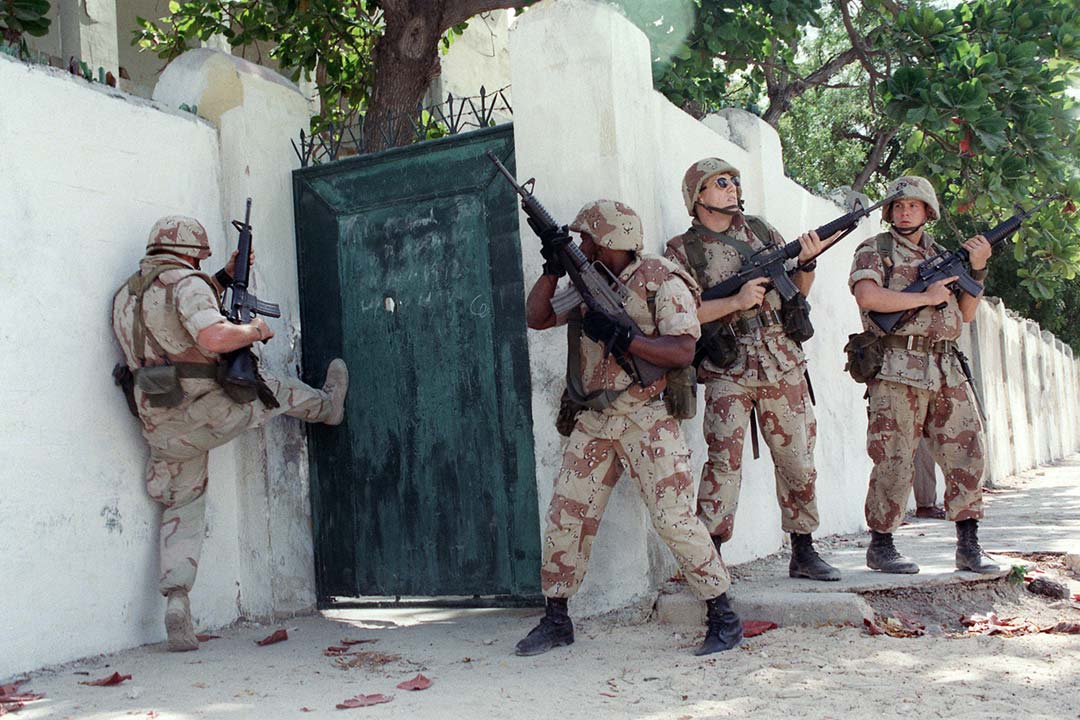
US marines break down a door in a deserted school as they search for snipers, 1 april 1993 in Mogadishu, Somalia. Since 3 December 1992, the UN autorised US troops to deploy in Somalia in order to restore peace after civil anarchy caused by roving gangs gunmen attached to local warlords. American troops from the United Nations International Trask Force (UNITAF) arrived 9 December 1992 in Mogadishu and began the “Restore Hope” operation. Since then number of foreign troops in Somalia has risen, twenty one countries are contributing to the UN forces in Somalia, the largest are US, France, Italy, Morocco and Canada. AFP PHOTO ALAIN BOMMENEL (Photo by Alain BOMMENEL / AFP)
At the start of the decade, the US’s involvement in the civil war in Somalia stimulated its multilateral engagements in the region. Its coordination of the United Task Force (UNITAF), which was a multinational force sanctioned by the UN in 1992 to create a conducive environment for humanitarian intervention in Somalia, marked its foreign policy shift to multilateralism in the region. In addition, US involvement in United Nations Operation in Somalia (UNISOM) II, following the failure of UNISOM I to re-establish order after the ouster of Barre, renewed its impetus towards multilateral cooperation in peace interventions in Africa.
While the US Central Command’s coordination in Operation Restore Hope – with a US personnel strength of 25,000 – highlighted its lead in multilateral cooperation in Somalia, its intervention was, however, viewed as an attempt to protect the oil concessions of US firms under the guise of humanitarian intervention. The transfer of UNITAF’s mandate to Unisom II augmented US interventions in enhancing stability in Somalia, until the Black Hawk Down episode in the Battle of Mogadishu, where 18 US soldiers who had raided the capital to capture allies of the Somali warlord Farah Aideed were killed, effectively ended its intervention in the mission.
Despite intelligence reports elsewhere in Rwanda indicating that Hutu and Tutsi militias were preparing for war, the Clinton administration’s complicity to intervene, deliberately, perhaps retreating from the failed intervention in Somalia, demonstrated the US’s ambivalence in terms of multilateralism. Despite Clinton’s apology at Kigali Airport in March 1998, the US’s non-intervention in Rwanda marked a reversal of its earlier initiative to advance multilateralism in Africa. Its quest to withdraw UN troops who were deployed in Rwanda after the signing of the Arusha Accords in 1993, as well as its deliberate effort to block the United Nations Security Council (UNSC) authorisation of deployment of troops to counter the atrocities, depicted a foreign policy shift, a complete reversal in its interventions for peace in Africa. Despite the Clinton administration’s impetus towards multilateralism in peacekeeping, the US’s failure to augment the United Nations Assistance Mission for Rwanda’s (UNAMIR) 2,500 troops, with an open opposition to aggressive peacekeeping, enhanced a non-intervention that facilitated the 1994 genocide.
The George W. Bush administration increased reversals to unilateralism in US foreign policy towards Africa. Following the 9/11 terrorist attacks, besides other attacks elsewhere in Nairobi and Dar es Salaam in 1998, the US intensified its security operations in the region, especially in the Horn. As the US has strategic interests in Somalia, it has used its naval and air facilities installed in Camp Lemonnier in Djibouti to advance its operations in the Horn and the Middle East. The Bush administration’s unilateral action, especially in its defiance of the UNSC and its Nato allies, and in its quest to wage the global war on terror, gave impetus to the emergence of al-Qaeda affiliated agencies such as al-Shabaab, which accelerated insecurity in the Horn.
US multilateralism in the region was reinvigorated by the Barrack Obama administration, especially in Libya, in 2011. Following UNSC’s resolution condemning the use of lethal force by Gaddafi against civilians, the US and its Nato allies, as well as South Africa and Nigeria, unabashedly voted in the affirmative in a subsequent resolution authorising military intervention. In response, the US, Britain and France launched air strikes, eventually ending operations in October 2011 after the eventual killing of Gaddafi. This operation caused devastation, especially in the destruction of civilian infrastructure and military installations. While the intervention was targeted at countering Libya’s supposed state-sponsored terrorism, it gave rise to new factional violence and violent Islamist militias that accentuated insecurity in the country. The US’s continued surveillance of violent extremism in Africa stretched throughout the Trump era, with the emergence of extremist groups in the Sahel region as well as militants associated with the Islamic State extremist group in Mozambique.
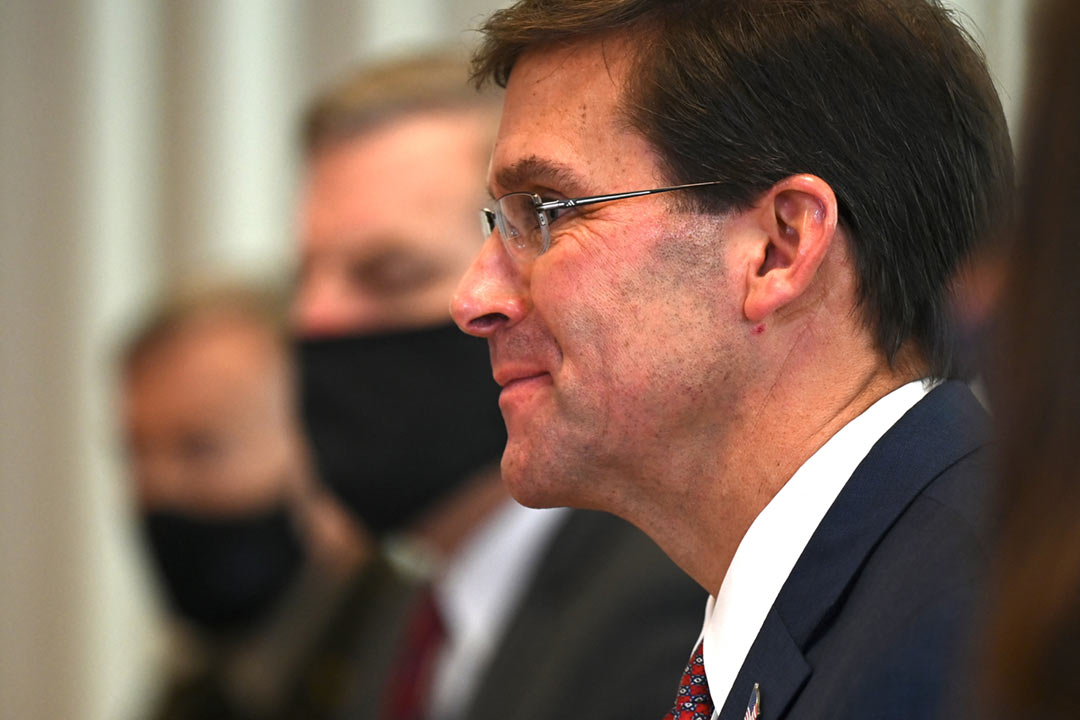
US Secretary of Defense Mark Esper meets with Bulgarian Minister of Defense Krasimir Karakachanov(not seen) at the Pentagon in Washington, DC, on October 6, 2020. (Photo by JIM WATSON / AFP)
The interventions discussed above demonstrate that the US plays a critical role in advancing peace and security in Africa. However, the imbalance between Africa and the US in terms of operations demonstrate the region’s weak leverage in peace and security interventions. The US has invested billions of dollars in strategic security installations in Africa. The Africa Command, Africom, founded in 2007 with 29 military bases in 15 different countries in the region, has remained central in security interventions. With 6,000 troops in Africa in 2020, the US has been critical in counterterrorism operations. In addition, the US military presence, military alliances and joint operation centres have increased intelligence-driven operations that have enhanced security in the region.
Besides strategic operations, imbalances in funding demonstrate the US’s leverage in peace and security interventions in Africa. While the AU envisages endowing the Peace Fund with $400 million from mandatory contributions by member states by 2021, the fund has received $55.9 million since 2017, thereby creating a gap that attracts foreign funding. The funding of UN peacekeeping is premised on the GDP of member states, and the US is the largest contributor with an annual amount of $2 billion. Hence its apparent opposition over the AU’s quest for burden-sharing in peace interventions in Africa. In 2018, the US opposed a UNSC resolution on the financing of AU-led peace support operations on UN-financed contributions. The US opposed this resolution, which was sponsored by Côte d’Ivoire, Equatorial Guinea and Ethiopia, on claims that AU-led peace operations should not receive more than 75% of the overall cost of UN-funded operations.
Despite the joint US-Africa Terrorism Task Force, established in 2020, the US’s scaling down of operations in Africa, specifically Trump’s order for the withdrawal of troops from Somalia, underscores the need for Africa to reinvigorate the APSA. In addition, the US’s intention to reduce its troops fighting extremists in the Sahel, as announced by defence secretary Mark Esper, reinforces the need for Africa to strengthen its counter-terrorism strategies.
In response to Trump’s order for scaling down US operations in Africa, President Joe Biden has called for increased Africa-US partnerships. Addressing the AU Summit 2021, Biden argued that the US was ready to partner with Africa “in solidarity, support and mutual benefit”. This partnership, Biden advised, would foster peace and security in the region.
First, besides supporting US-led interventions, the AU should strengthen its infrastructure for peace, especially the African Peace and Security Architecture (APSA), to ensure preventive diplomacy that would centrally place its agency in pre-emptive interventions. Second, the AU should deploy the principle of non-indifference, or enforce the R2P (responsibility to protect) regime, in pre-emptive deployment of its forces to counter security threats that attract foreign interventions. Third, the AU Peace and Security Council (PSC) needs to strengthen its intelligence-gathering capacity in the quest to counter violent extremism, especially in the Horn and the Sahel, with renewed partnerships with key allies like the US, who would provide strategic intelligence for interventions.
Fourth, the AU should strengthen its peacekeeping capabilities. Strengthening of the APSA has, for instance, improved coordination between regional economic communities in peace and security interventions. The operationalisation of the PSC, the Continental Early Warning System , as well as the African Standby Force, has improved the AU’s leverage in early warning and preventive diplomacy, while initiating peacekeeping interventions beside mediations led by the Panel of the Wise.
Fifth, AU member states should lobby for improved burden-sharing in peace interventions. The AU’s deployment of interventions, for instance in Burundi (2003), Sudan (2004), and in Somalia (2007), as well as support in the UN-AU Mission in Darfur (2007), Central African Republic (2013), and Mali (2013), demonstrates its renewed quest to effect “African Solutions to African Problems”. It is in seeking further multilateral cooperation that the AU would build capacity to fill intervention gaps that attract external military interventions.
Sixth, despite such operational capabilities, APSA suffers major inadequacies, especially in its financing. Besides the funding by the US, the EU has since 2004 funded the APSA through the African Peace Facility, APF, by channelling its funds — €2.7 billion — through the AU. The unpredictable funding of APSA with a change of focus of major donors, for example the EU, and Congress’s decline in funding peace operations in CAR and Western Sahara, underscores the need for the AU to mobilise more funding for its peace interventions.
In conclusion, operational and financial challenges have constrained Africa’s agency, creating imbalances in Africa-US interventions in the region. It is in strengthening the AU’s capacity for preventive diplomacy, and capacity in peacekeeping deployment — in terms of operations, technical capacity, and financing — that Africa will increase its ability to reshape multilateral engagements in peace and security interventions in the region.


